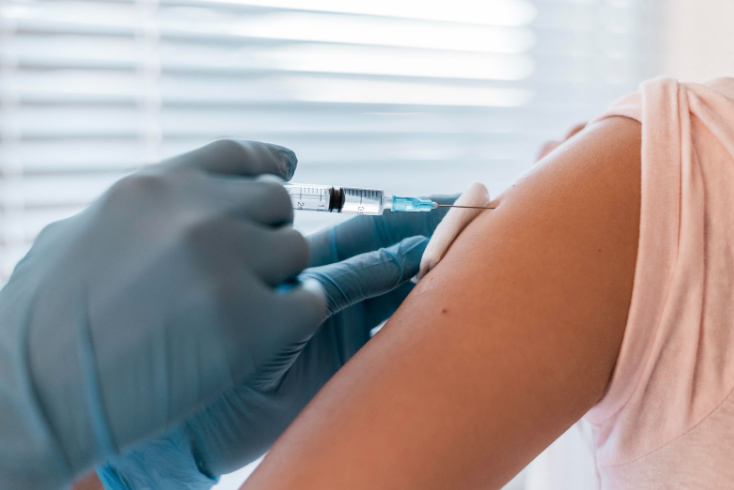Index
Key Takeaways:
- Always bill both CPT codes: one for the vaccine and one for administration.
- Reduce coverage denials by using real-time eligibility tools.
- Leverage EHR and dispensing system integrations to support required documentation.
- Understand your payer contracts to optimize flu season earnings.
- Appeal and correct denied claims to protect your vaccine revenue stream.
Flu shot reimbursements are more lucrative than many pharmacists realize. Each year, countless pharmacies, clinics, and health systems miss out on thousands of dollars in unclaimed revenue simply by failing to bill accurately for both the influenza vaccine product and its administration.
This article dissects how to properly capture and code each component of flu shot billing—helping you strengthen your vaccine revenue stream, improve pharmacy profit margins, and drive reimbursement optimization during flu season.
Key Factors Affecting Flu Shot Reimbursement Rates
Payer Contracts and Variability
Each insurance payer—whether Medicare, Medicaid, or commercial—sets their own flu shot reimbursement rates. Rates can vary by provider type (pharmacy vs. clinic), geographic region, and service setting (in-clinic vs. off-site).
These payer-specific contracts determine vaccine reimbursement rates. Some contracts bundle vaccine administration into overall visit payments, while others pay separately. Understanding these nuances ensures you’re appropriately coding encounters to maximize revenue capture.
Geographic and Provider Type Differences
Rural providers, Federally Qualified Health Centers (FQHCs), and independent pharmacies often face lower baseline rates. However, many are eligible for enhanced payments if they’re serving high-risk or underserved populations. Knowing your status under the Centers for Medicare & Medicaid Services (CMS) or your state Medicaid program can significantly impact your billing strategy.
Vaccine Acquisition Costs
Purchasing influenza vaccines at the lowest cost directly affects your margins. Using federal programs like the Vaccines for Children (VFC) or contracting with group purchasing organizations (GPOs) helps balance lower vaccine reimbursement rates with better pharmacy profit margins.
Summary: Understanding what drives flu shot reimbursement rates is essential for planning a profitable vaccine strategy. Reimbursement varies based on payer contracts, geography, provider type, and acquisition costs. Knowing these elements helps providers set realistic expectations and plan billing workflows that preserve pharmacy profit margins.
Simplify Pharmacy Operations with DocStation
Improve patient care and efficiency with DocStation’s seamless provider-payer collaboration.
Best Practices for Hardwiring Flu Shot Billing
CPT Codes for Vaccine Products
Every flu shot has two billable components:
1. The vaccine product (e.g., CPT 90686, 90756).
Common CPT codes for flu vaccines include:
- 90686: Influenza virus vaccine, quadrivalent, preservative-free, for intramuscular use.
- 90662: High-dose influenza vaccine, for patients aged 65 and older.
- 90672: Live attenuated influenza vaccine, for intranasal use.
Each code corresponds to a specific vaccine formulation and patient demographic. Selecting the appropriate code ensures accurate reimbursement.
2. The administration fee (e.g., CPT 90471 or G0008 for Medicare)
Billing for the administration of the vaccine is separate from the vaccine product itself. Common administration codes include:
- 90471: Immunization administration (percutaneous, intradermal, subcutaneous, or intramuscular injections); one vaccine.
- 90472: Each additional vaccine administered.
- G0008: Administration of influenza virus vaccine for Medicare patients.
G0008: Administration of influenza virus vaccine for Medicare patients.
Failing to include both codes leaves revenue on the table. Worse, incorrect codes can trigger claim denials and payer audits.
Product vs. Administration Billing
Many providers mistakenly believe the flu shot reimbursement includes administration. This is not true for Medicare and most commercial payers. You must always bill the vaccine and its administration separately—unless your payer contract specifies otherwise.
Coordination With State and Federal Programs
Participation in programs like VFC or Medicare Part B requires additional compliance steps, including patient eligibility checks and accurate usage tracking. These steps can be automated, but must be monitored to ensure proper vaccine revenue stream capture.
Summary: Effective billing begins with accuracy. Each flu vaccination encounter must include the correct CPT codes for both the product and its administration. Coupled with proper documentation and an awareness of payer-specific requirements, these practices help prevent denials and ensure consistent revenue flow.
“Separate billing for the vaccine and its administration is the single most effective way to avoid lost flu shot revenue.”
Leveraging Technology to Maximize Vaccine Revenue
Automated Billing Systems
Implementing automated vaccine billing systems ensures that both product and administration are billed properly every time. This also reduces staff workload and increases billing accuracy.
Real-Time Eligibility Checks
Real-time eligibility tools validate insurance coverage for the vaccine before it’s administered. This reduces rejections and ensures the correct payer is billed. For dual-eligible patients, this can mean the difference between full payment and no payment.
Integration With EHR and Dispensing
A well-integrated EHR and dispensing system helps link clinical documentation with billing data. This ensures you don’t miss out on opportunities to bill for each dose and administration event, while supporting audit readiness and improving compliance.
Summary: Manual billing leaves room for error and lost revenue. Using integrated, automated systems enables real-time eligibility checks, seamless documentation, and accurate coding—turning flu vaccinations into a reliable vaccine revenue stream, especially during peak flu season earnings.
“Automation and real-time eligibility checks are must-haves to protect your vaccine revenue stream.”
Strategies for Navigating Reimbursement Challenges and Denials
Common Denial Reasons
Understanding common reasons for claim denials can help in developing strategies to prevent them. Typical denial reasons include:
- Omitted administration codes and/or modifiers
- Improper selection of CPT codes
- Billing date of service outside of coverage window
- Missing prior authorizations (in rare cases).
Documentation and Coding Integrity
Ensuring that all documentation is complete and that coding is accurate is essential for preventing denials. Regular training and audits can help maintain high standards of documentation and coding integrity. To support your claims, you need complete and accurate records of:
- Vaccine lot and expiration number
- Site of administration
- Administering clinician
- Patient consent and eligibility documentation
This data is critical during payer audits or appeal processes.
>Appeals and Resubmissions
A structured denial management process can help you recover denied claims. Use payer-specific appeal forms, reference Local Coverage Determination and National Coverage Determination (LCD/NCD) guidelines, and attach relevant documentation. High-volume providers benefit from batch appeal tools and automated resubmission logic.
Summary: Proactively addressing common denial triggers, maintaining documentation integrity, and having a structured appeals process in place ensures you recover lost revenue and maintain steady cash flow from your vaccine services.
Final Thought
Billing for both the influenza vaccine product and its administration is non-negotiable if you want to maximize vaccine revenue. With flu shot reimbursement rates varying widely across payers and regions, precision in billing and use of advanced tools makes a measurable impact on pharmacy profit margins.
Don’t let missed billing opportunities reduce your seasonal revenue. Schedule a free consultation with DocStation to audit your flu shot billing strategy and implement tools that ensure compliance, increase payer acceptance, and maximize flu shot reimbursement.
Collaborate, Innovate, Succeed with DocStation
Experience seamless collaboration between providers and payers with our single solution, ensuring pharmacists are fairly compensated for their essential services.
FAQs
How much do pharmacies get reimbursed for flu shots?
Reimbursement typically ranges from $20 to $60 per shot, depending on the payer, vaccine type (standard vs. high-dose), and geographic location. Medicare Part B reimburses around $30–$40 for both the vaccine and its administration.
How to increase vaccine reimbursement rates?
To improve reimbursement rates, pharmacies should negotiate better payer contracts, reduce vaccine acquisition costs, and ensure they bill both the product and administration separately using correct CPT codes. Participating in value-based payer programs can also open up higher reimbursement tiers.
What affects vaccine reimbursement rates?
Rates are influenced by payer policies, provider type, vaccine formulation, geographic location, and contract terms. Public programs like Medicare and Medicaid have set rates, while commercial payers may vary based on negotiated agreements.
How to verify vaccine coverage for reimbursement?
Use real-time eligibility verification tools integrated with your EHR or billing system. These tools confirm whether the patient’s insurance covers the vaccine and administration, the appropriate billing codes, and any cost-sharing requirements before service delivery.






